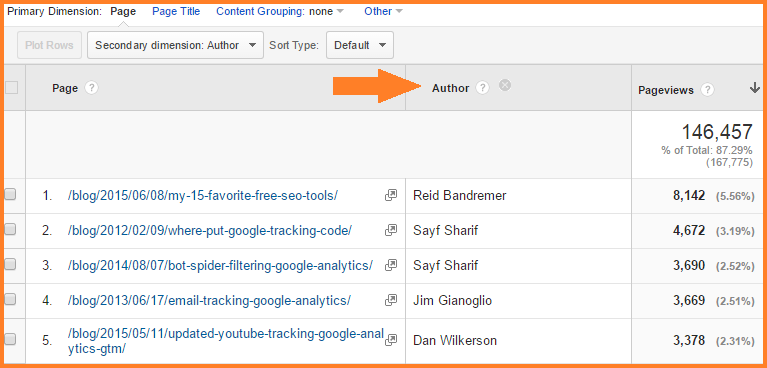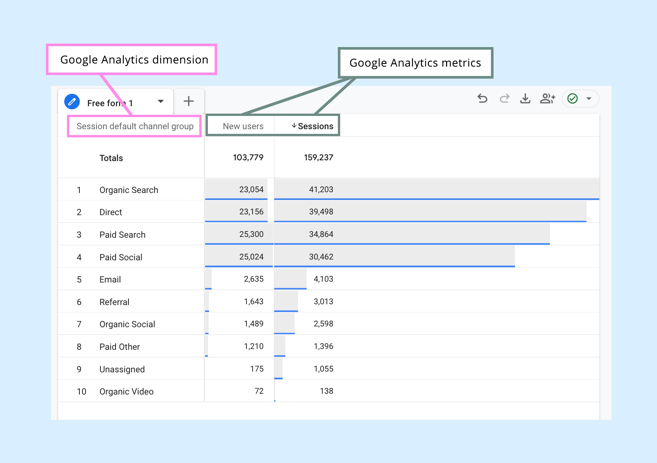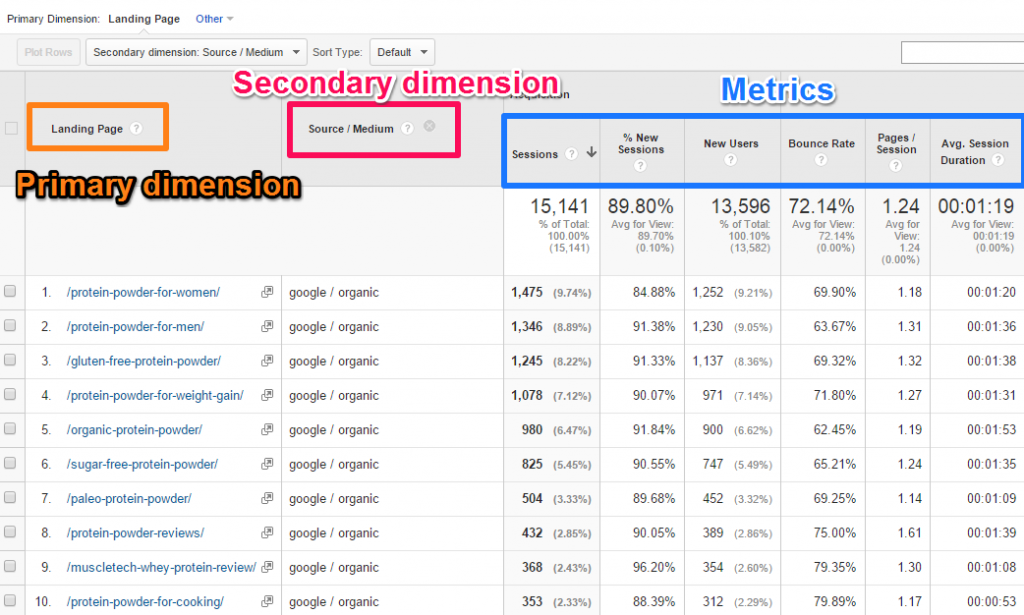Translating the Importance of Additional Measurement in Google Analytics: All Regarding Its Relevance and Impact
In the realm of electronic analytics, the application of secondary dimensions within Google Analytics acts as an essential tool for critical deeper layers of data understandings. The value of second measurements lies in their capacity to supply a nuanced sight of customer actions and communication with a web site or platform. By exploring information beyond surface-level metrics, businesses can unlock a riches of details that refines and forms tactical choices advertising initiatives. This exploration into the realm of additional dimensions not only provides an extensive understanding of user interaction however additionally drops light on the elaborate characteristics that drive on the internet performance.
Understanding Additional Dimensions in Google Analytics
The understanding of additional measurements in Google Analytics is necessary for acquiring deeper insights into customer actions and internet site performance. While key dimensions offer essential data points such as web traffic resources and web page views, secondary dimensions permit a more nuanced analysis by offering added context to these main metrics. By including secondary dimensions, customers can section and filter their information to reveal patterns and fads that may not be promptly obvious.

Unveiling the Benefits of Additional Dimensions
Structure upon the fundamental understanding of additional dimensions in Google Analytics, exploring the benefits they provide exposes important understandings for boosting data evaluation and decision-making. By integrating additional dimensions, users can dive deeper right into their data, obtaining an extra extensive view of individual habits, material performance, and other crucial metrics.
Furthermore, secondary dimensions supply context to main data, providing extra layers of info that can aid in comprehending customer interactions and preferences. This enhanced understanding can guide strategic decision-making, causing even more targeted advertising and marketing campaigns, website optimizations, and general improved efficiency. Essentially, secondary dimensions work as an effective tool for unlocking deeper understandings and making the most of the utility of Google Analytics for services and internet site owners.
Leveraging Additional Measurements for Enhanced Insights
By taking advantage of the power of second dimensions in Google Analytics, organizations can uncover deeper understandings that drive informed tactical and decision-making optimization initiatives. Leveraging secondary measurements permits businesses to dig past surface-level information and acquire an extra thorough understanding of individual actions, target market demographics, traffic resources, and website efficiency. By integrating primary dimensions like web traffic sources with additional measurements such as geographical area or device group, organizations can identify which gadgets or areas are driving the most useful website traffic to their internet site.
Furthermore, additional measurements make it possible for organizations to segment and analyze data extra properly, helping them identify fads, patterns, and opportunities that might have or else gone unnoticed. By making use of second measurements, services can customize their advertising methods, material, and user experience to much better satisfy the needs and choices of their target audience. Essentially, leveraging second measurements in Google Analytics encourages organizations to make data-driven decisions that result in boosted performance, increased ROI, and sustainable growth.

Impact of Additional Dimensions on Data Evaluation
Enhancing information analysis through the use of second dimensions in Google Analytics offers companies with a much deeper understanding of their online performance metrics. By incorporating additional dimensions, such as time of day, geographic location, or tool category, organizations can discover valuable understandings that may have been forgotten with key measurements alone. This boosted level of granularity permits for even more precise segmentation of information, making it possible for organizations read to identify patterns, fads, and relationships that can drive critical decision-making.

Making Best Use Of Possible: Secondary Capacities Approaches
One key technique is to combine second dimensions with main dimensions to get an extensive view of customer interactions. Matching the main measurement of 'source/medium' with additional dimensions like 'landing web page' or 'gadget category' can reveal which channels are driving website traffic to certain pages or just how customer habits varies throughout tools.
Furthermore, making use of additional measurements to segment information based on individual demographics, habits, or modern technology can aid services tailor their advertising initiatives to specific target market segments. This targeted method can lead sites to improved conversion rates, improved individual experiences, and inevitably, increased ROI. By making best use of the capacity of additional measurements in Google Analytics, organizations can make enlightened choices, enhance their on-line visibility, and drive sustainable growth.
Final Thought
In verdict, secondary dimensions in Google Analytics play an essential role in supplying much deeper insights and boosting data analysis. By making use of additional measurements successfully, companies can gain a more detailed understanding of customer behavior and site efficiency. Integrating second dimensions into data evaluation strategies can lead to even more educated decision-making and improved overall performance. It is essential for services to utilize the power of secondary dimensions to optimize their potential and accomplish greater success in their online endeavors (what is a “secondary dimension” in google analytics?).
While primary measurements supply basic information points such as website traffic resources and web page sights, additional measurements allow for an extra nuanced evaluation by offering added context to these key metrics. By incorporating primary measurements like web traffic sources with additional measurements such as geographical place or gadget group, companies can determine which regions or devices are driving the most beneficial website traffic to their web site.
By including like it secondary dimensions, such as time of day, geographic area, or device classification, organizations can reveal valuable understandings that may have been neglected with main dimensions alone. One key method is to integrate additional dimensions with primary measurements to obtain a detailed sight of customer communications. Combining the key measurement of 'source/medium' with additional measurements like 'landing page' or 'tool category' can reveal which networks are driving traffic to particular pages or just how user behavior varies across tools.